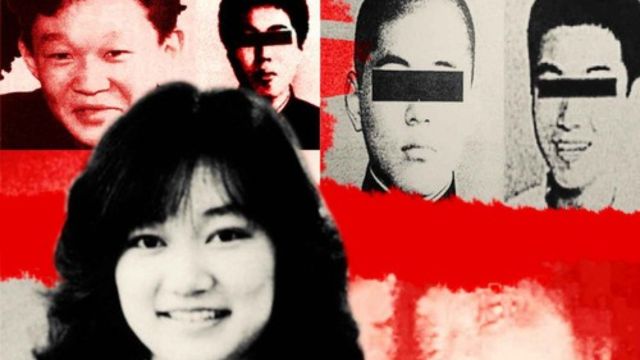One of the most horrific and heartbreaking criminal cases in contemporary history is still the case of Junko Furuta. Over thirty years after her untimely death, her story still holds the attention of people all over the world, not just because of its brutality but also because of the obvious shortcomings in the legal system and the carelessness of society that permitted it to occur.
Who Was Junko Furuta?
A 17-year-old high school student from Misato, Saitama Prefecture, Japan, was named Junko Furuta. She was well-known for her knowledge, beauty, and kindness. She led a typical life with goals for the future. Tragically, a group of teenage guys kidnapped, tortured, and killed her in 1988, ending her life in the most unimaginable way.
Her narrative speaks for countless young people who endure abuse, violence, and neglect in silence; it is not just about one victim.
The Abduction: A Premeditated Crime
While returning home from school on November 25, 1988, Junko was kidnapped by force after being duped by a classmate. She spent forty-four days in captivity after being brought to the house of Hiroshi Miyano, one of her assailants. Even though Junko lived close to her neighbors and even had family members living with her, her cries for assistance were disregarded, or worse, ignored.
All of the boys in the case were underage:
- Miyano Hiroshi (18)
- Ogura Jō (17)
- Minato Shinji (16)
- Watanabe Yasushi (17)
An important factor in understanding how the gang operated with such impunity was their affiliation with the Japanese organized crime group known as the yakuza.
The 44 Days of Unimaginable Torture
Junko Furuta suffered horrendous sexual, physical, and mental torture. It is said that she was beaten, burned, malnourished, and attacked more than 400 times. In addition, she was subjected to unspeakable degrading treatment, such as having to sleep outside in subfreezing conditions and having to drink her own urine.
The fact that the boys’ parents and other guests knew she was there but did nothing about it during her imprisonment is very unsettling. The abuse went undetected because of social indifference and silence.
Death and Discovery
Following weeks of mistreatment, Junko passed away from her wounds on January 4, 1989. The group filled a 55-gallon oil drum with concrete and packed her body inside before disposing of it at a cement truck property in Koto, Tokyo, out of fear of legal repercussions.
Only until one of the lads confessed during an unrelated police investigation was her body found. Even experienced detectives were disturbed by the condition of her remains since the finding was so gory.
Legal Proceedings: A Failure of Justice?
The court verdict in the Junko Furuta case is among its most contentious features. The identities of the criminals were first shielded by Japanese law since they were minors, but local media eventually revealed them because of the horrific nature of their crime.
Many people believed that the punishments imposed were unduly light:
- Twenty years in prison were handed down to Hiroshi Miyano.
- After serving eight years, Jō Ogura committed another crime.
- Yasushi Watanabe and Shinji Minato were both given brief sentences.
Outrage was generated both domestically and internationally by the light sentence. Many contended that Junko had been further victimized by the legal system’s failure to provide her with full justice.
Why the Story of Junko Furuta Is Still Relevant Today
The Junko Furuta case, which took place in the late 1980s, is still very relevant for a number of reasons:
1. Drawing Attention to Systemic Failures
The case revealed a number of institutional and societal shortcomings, including a legal system that shielded children from serious crimes, neighbors who chose to ignore them, and a general cultural unwillingness to step in.
2. A representation of women’s rights
Not only in Japan but also throughout the world, Junko’s narrative has come to represent women’s safety, abuse, and victim advocacy. Her experience serves as a reminder that gender-based violence frequently goes unreported and unpunished.
3. Cultural Heritage and the Internet
The narrative of Junko Furuta has been the focus of dramatizations, podcasts, blog entries, and films over the years. Numerous pieces seek to memorialize her life and demand institutional change, while others have been attacked for being sensational.
The Internet’s Contribution to Preserving Her Memory
The story of Junko Furuta is now more well-known than ever before because of the growth of social media and internet platforms. Her memory is still preserved through advocacy articles, Reddit conversations, and YouTube films. This guarantees that her suffering was not in vain, even though it might not provide immediate justice.
Where Do We Go From Here?
If this tragedy has any lesson, it is the urgent need for changes in community watchfulness, juvenile justice, and social responsibility. No crime should go unpunished because of the age or power of the offenders, and no one should suffer in silence.
Lessons Learned:
- Report suspicious conduct at all times, especially if it appears “personal.”
- In situations involving extreme violence, support stricter laws against minor criminals.
- Encourage the provision of mental health services and victim support to families impacted by violence.
Remembering Junko Furuta
In addition to being the victim of a vicious crime, Junko Furuta is remembered as a young woman whose tragic story changed public perceptions of violence against women and adolescent criminality. Her legacy demands empathy, awareness, and reform.
May her memory act as a continual reminder of the work that remains to build a society that is safer and more equitable.
Stay informed with in-depth stories that matter. At New Business Herald, we bring you the latest trending news, true crime insights, and expert-driven analysis. Bookmark us and explore real stories with real impact—because knowledge shouldn’t be surface-level. Discover more, right here.






